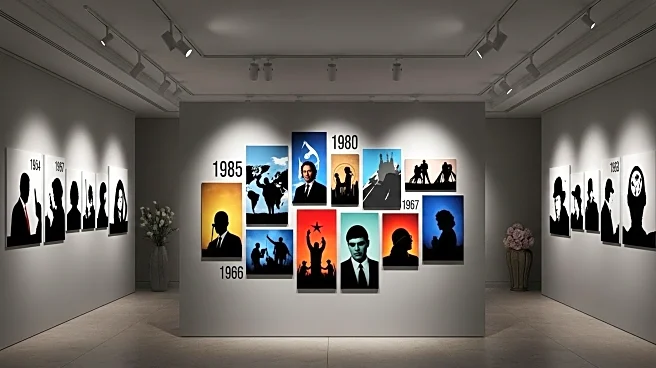What's Happening?
Reuters is marking 40 years of its photojournalism service with the release of a new book titled 'In the Moment: 40 Years of Reuters Photojournalism.' The book showcases memorable stories and moments captured by the agency's photographers since the launch of its photo service on January 1, 1985. The collection includes iconic images such as the 'Tank Man' from Tiananmen Square in 1989, captured by photographer Arthur Tsang. The book highlights the evolution of photojournalism, from film to digital, and the diverse representation within the field today. Reuters has grown from 50 photographers to teams worldwide, publishing over 14 million photos and winning numerous awards.
Why It's Important?
The celebration of Reuters' photojournalism underscores the critical role of visual storytelling in news media. The transition from film to digital has revolutionized the speed and accessibility of news images, allowing for rapid global dissemination. This evolution has also democratized the field, increasing diversity among photographers and editors. The book serves as a testament to the enduring power of photojournalism in shaping public perception and historical record. It highlights the importance of capturing pivotal moments that resonate across cultures and time, reinforcing the value of visual media in contemporary news reporting.
What's Next?
The release of 'In the Moment' may inspire further retrospectives and exhibitions celebrating the history and impact of photojournalism. As digital technology continues to advance, the field may see further innovations in how images are captured, edited, and distributed. The book could also spark discussions on the ethical considerations of photojournalism, such as the representation of subjects and the impact of images on public opinion. Reuters and other news agencies may continue to explore ways to leverage technology to enhance storytelling while maintaining journalistic integrity.
Beyond the Headlines
The book's focus on iconic images invites reflection on the ethical dimensions of photojournalism, including the responsibility of photographers to accurately represent events and the potential influence of images on public discourse. It also highlights the cultural significance of visual media in documenting social movements and political events, offering a lens through which to examine historical narratives. The evolution of photojournalism may prompt discussions on the balance between technological innovation and the preservation of traditional storytelling techniques.











